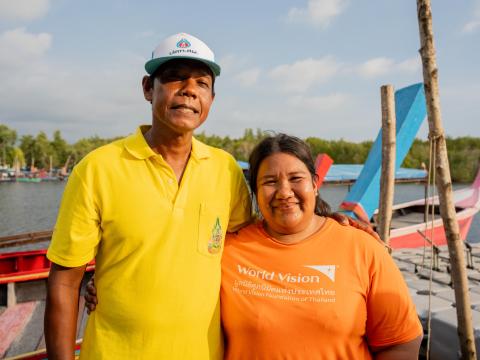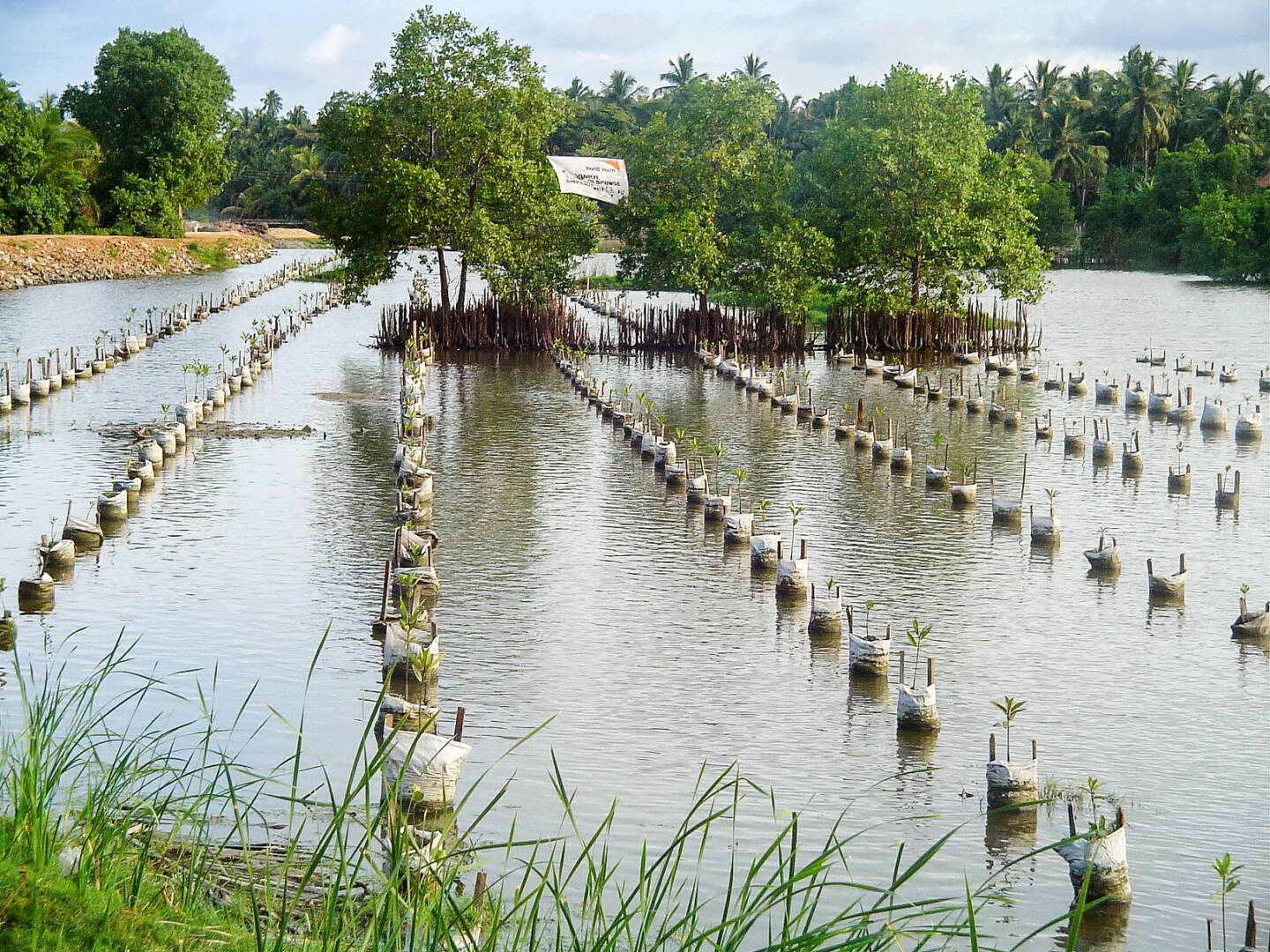Mangroves of Resilience: 20 Years of rebuilding and protecting Ban Tha Din Daeng

The Ban Tha Din Daeng Hydroponic Vegetable Community Enterprise grows hydroponic vegetables for a living that include general soil-based plants, like cucumbers, long beans and watermelons. This hydroponic vegetable growing group started after the tsunami disaster. Ban Tha Din Daeng Community covers an area of about 1.9 acres that is surrounded by mangrove forests.
These mangrove forests absorb the impact of the tsunami. But the entire village evacuated to Lam Pi.
The mangrove forests in Ban Tha Din Daeng cover an area of nearly ten thousand rai (four acres), including both sides. These mangrove forests have been restored after the charcoal contract ended. Some plants have thrived while the other have failed.
The mangrove forests are important for the ecosystem of the community. They are vital to the ecosystem because they serve as excellent barriers against waves, winds and monsoons. All areas of the mangrove forests, as well as other land forests, are important to the ecosystem and the environment around the mangrove forests. Mangrove forests are the green system that best reduces global warming and carbon. Mangrove forests can absorb as much as 5-10 times of carbon, compared to land forests. The community sees the importance of the mangrove forests so they continue caring and restoring them.
When the tsunami came, the community had these mangrove trees as their best barriers. Despite some damage, they served well as a front-line shield against the monsoon, waves and other natural disasters.
When the tsunami came, it swept away all of the mangrove trees. The damaged mangrove forests, not only in Ban Tha Din Daeng but also in many other areas in Thai Mueang District, in Tha Din Daeng alone, the forest areas could add up to 40 acres.
Because the Ban Tha Din Daeng community was one of the communities impacted by the tsunami, a mangrove forest care team was established. World Vision Thailand was part of the reforestation promotion. World Vision came to support re-growing the mangrove trees that had been destroyed by the tsunami. After that, the whole community came together to take on the responsibility. The projects supported by World Vision Thailand also included livelihood promotion, like rubber tapping, so local people affected by the incident could have stable farming occupations.
World Vision joined forces with the community people in Ban Tha Din Daeng. The community received tsunami restoration support during 2005-2006. They came to collect the husks of the mangroves with community members to regrow the forest lines that were swept away by the tsunami.
On environmental restoration, they supported mangrove reforestation along with knowledge. The support of World Vision responded to different types of needs.
Initially, the community members collected around ten thousand husks. Altogether, they collected as many as around 30 thousand husks, which the community planted with World Vision Thailand. It was an organisation that came in to support us in this reforestation. I will show you the forest area which was regrown 19-20 years ago, where we planted with World Vision Thailand, now very fertile and beautiful.
It is a learning source for people within and outside of the community. It shows them how the forests we have grown for more than 10 years now are very fertile. I would like to thank World Vision Thailand for promoting and taking part in the activity to restore the mangrove forests here.
The community let the community environment-conservation tourism group as a mechanism to manage the mangrove forests. There is a village committee that focuses on the issue. This tourism group receives some budget that they spend on cultivating saplings and restoring both forests by the sea and on land, as well as waste management in the community.
They were restored and improved. Broken branches were removed. New saplings were sourced. We were in a rush then. We did not have time to grow saplings. So we planted the husks of the mangroves that villagers helped collect. We helped each other plant these husks. Their survival rate was around 60-70 percent.
Later, when we received saplings grown from the mangrove reforestation unit. They came in growing bags. These were the planting steps. We took care of them together after that. Until today, we see the condition of the forests and are proud as we look back to our collaboration on that day, until today, 20 years later.
Currently, World Vision Thailand leads the community youth in the reforestation initiative, learning about mangrove forests and local fishery. The community is excited that children and youth are involved as they will drive environment conservation in the future. These activities have been integrated into the community and schools. Teachers support students to learn about these issues.

Children and youth learn many things like how plants grow, how they can serve as barriers for our village and how we can build these barriers. They are very useful. They allow aquatic animals to grow. Fishermen can find fish from this natural resource. They also make a scenic tourist attraction. Reforestation helps replenish plants. If some plants die, then new ones can be planted to replace the dead ones so that the forests continue growing.
The community is better prepared because they have built a strong barrier. If another tsunami comes, the community can somehow protect itself. They may face some damage but it would not be so severe.
Children learn about how tsunamis develop, what their natures are, what signs are before they happen and how to deal with them to stay safe. They learn about prevention. Big trees, mitigate damage and reduce the loss to the infrastructure so it is integral to grow trees.
World Vision Thailand led activities and brought students from different schools to help plant mangroves and grow trees and give re-greening information. For example, in Ban Thai Daeng School, they conduct re-greening activities, promote environment conservation and pick up trash along the road. It is a collaboration to encourage children to grow awareness of conserving forests and environments, keeping their village clean and safe.